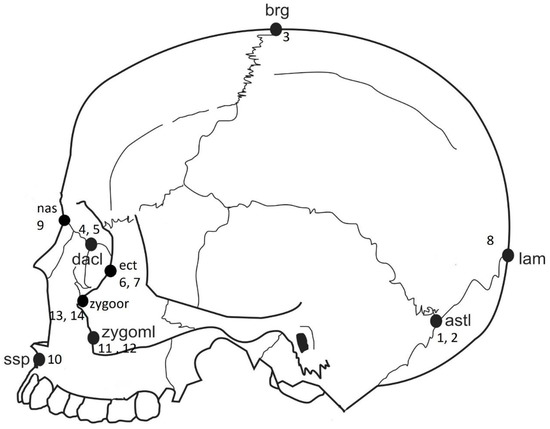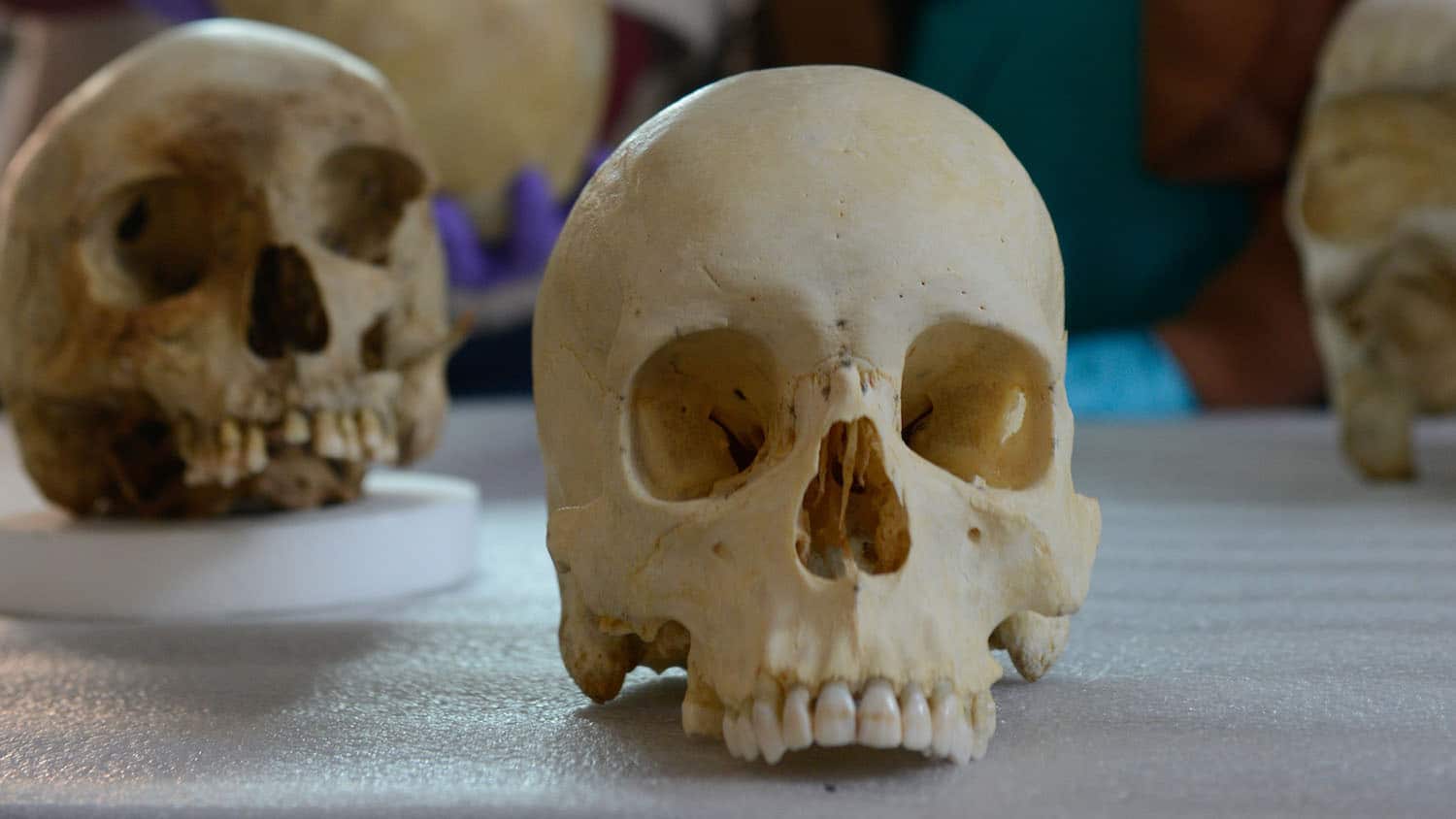Ancestry Studies in Forensic Anthropology: Back on the Frontier of Racism
Biology
Volume 10, Issue 7 (2021)
pages 602-613
Published: 2021-06-29
DOI: 10.3390/biology10070602
Ann H. Ross, Professor
Department of Biological Sciences,
North Carolina State University, Raleigh, North Carolina
Shanna E. Williams, Clinical Associate Professor
University of South Carolina School of Medicine Greenville, Greenville

Figure 1
Anatomical landmark location and associated landmark number from Table 1. |
Simple Summary
Within the practice of forensic anthropology ancestry is oftentimes used as a proxy for social race. This concept and its implications were explored via a content analysis (2009–2019) of the Journal of Forensic Sciences. Our findings revealed antiquated views of race based on the trifecta of continental populations (Asia, Europe, and Africa) continue to be pervasive in the field despite scientific invalidation of the concept of race decades earlier. Moreover, our employment of modern geometric morphometric and spatial analysis methods on craniofacial coordinate anatomical landmarks from several Latin American samples produced results in which the groups were not patterned by ancestry trifecta. Based on our findings we propose replacing the assumption of continental ancestry with a population structure approach that combines microevolutionary and cultural factors with historical events in the examination of population affinity.
Abstract
One of the parameters forensic anthropologists have traditionally estimated is ancestry, which is used in the United States as a proxy for social race. Its use is controversial because the biological race concept was debunked by scientists decades ago. However, many forensic anthropologists contend, in part, that because social race categories used by law enforcement can be predicted by cranial variation, ancestry remains a necessary parameter for estimation. Here, we use content analysis of the Journal of Forensic Sciences for the period 2009–2019 to demonstrate the use of various nomenclature and resultant confusion in ancestry estimation studies, and as a mechanism to discuss how forensic anthropologists have eschewed a human variation approach to studying human morphological differences in favor of a simplistic and debunked typological one. Further, we employ modern geometric morphometric and spatial analysis methods on craniofacial coordinate anatomical landmarks from several Latin American samples to test the validity of applying the antiquated tri-continental approach to ancestry (i.e., African, Asian, European). Our results indicate groups are not patterned by the ancestry trifecta. These findings illustrate the benefit and necessity of embracing studies that employ population structure models to better understand human variation and the historical factors that have influenced it.
Read the entire article in HTML or PDF format.

